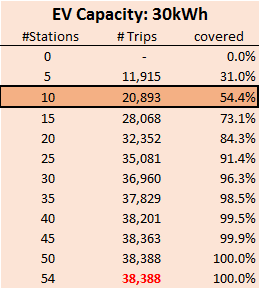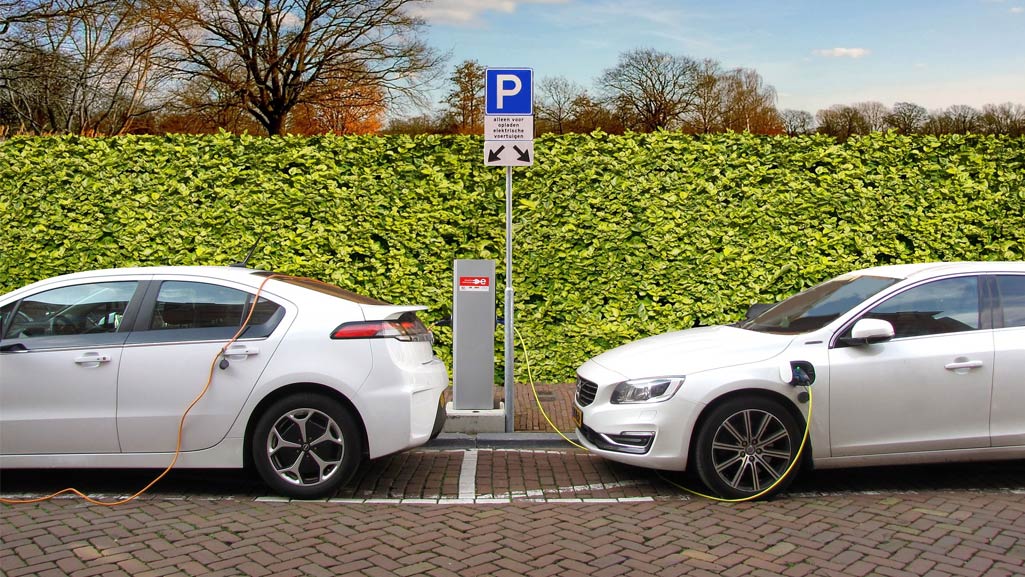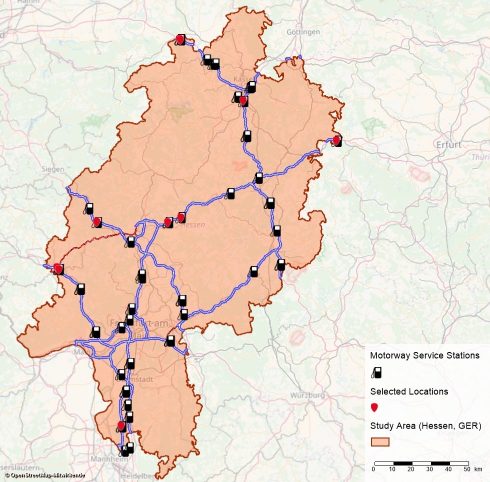The past ten years have seen significant growth in electric vehicles (EVs) from virtually none to almost 6 million on the road today. In times of climate change, awareness of sustainable mobility is increasing. Governments worldwide support electric cars – among other things to fight air pollution in cities. But as the popularity of EVs increases, the demand for charging stations is also growing.
For an efficient charging infrastructure network, the best locations must be identified as early as the planning phase. With the traffic planning software PTV Visum, route-based analyses can be carried out as they are already used for location analyses with other issues. The software rates all possible locations by taking into account not only the traffic volumes, but also the origin, destination and route of every passing car, and it checks if there are already other charging stations along the route where people could recharge during their longer trips. This makes it possible to determine where charging stations would have to be set up to close gaps in the charging infrastructure network and to be able to serve long-distance traffic flows not yet covered
Possible charging infrastructure using the example of Hesse
Let’s take a look at a concrete example. Germany is one of the biggest markets for electric cars in Europe. The number of new registrations of EVs has almost tripled since 2015. The German government has set itself the goal of creating one million public charging points for electric cars by 2030. So let us consider the state of Hesse as a study area. Where and in which order should e-charging stations be opened in Hesse to cover the highest possible number of long-distance trips and traffic flows? The study is based on Validate, the Germany-wide traffic model of the PTV Group.

- The number of trips that require a recharge along the route to reach their destination (depending on the range, so we use the standard EV of 30 kWh). In our example, there are 38,388 trips per working day in Hessen.
- .The best locations for e-charging stations from a pre–selected amount of locations (in our example we used all 54 motorway service stations in Hessen) to cover as many of these trips as possible by taking into account, how many are already covered by already existing locations.
- The order in which these locations should be opened to cover as many journeys as possible as quickly and with the fewest number of charging stations as possible.
- Only ten locations along motorways in Hessen need to be equipped with e-charging stations to cover at least 50% of all long-distance trips.
But why is such analysis required? The support of electric vehicles is an essential component of a sustainable transport policy. EVs have a chance at vastly reducing the pollution produced by conventional fuel-powered vehicles. To limit global warming to below two degrees Celsius (3.6 degrees Fahrenheit), the target set by the landmark Paris Agreement on climate change, the world will need 600 million electric vehicles by 2040, according to the International Energy Agency.
Several countries, including Britain, France and India, have said they want to end sales of fuel-powered vehicles in less than 25 years. In a shocking move, China, the world’s largest market for automobiles (with over 28 million cars sold in 2016), attracted attention with the declaration of intent to bring an end to the sale and production of oil-powered vehicles. The first results were already noticeable in 2018, when automobile sales in China declined for the first time since 2008, with around 23.7 million units sold.
This significant shift now focuses on accelerating the push for electric vehicles, which will result in increasing demand for e-charging stations as well. With PTV solutions, governments, automakers, and other groups can take advantage to optimise and build a network of e-charging stations to meet the needs of EV owners.

